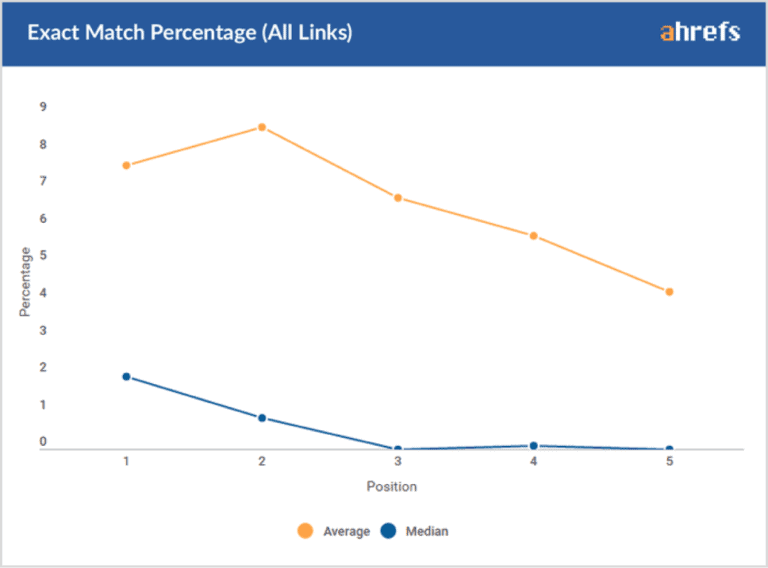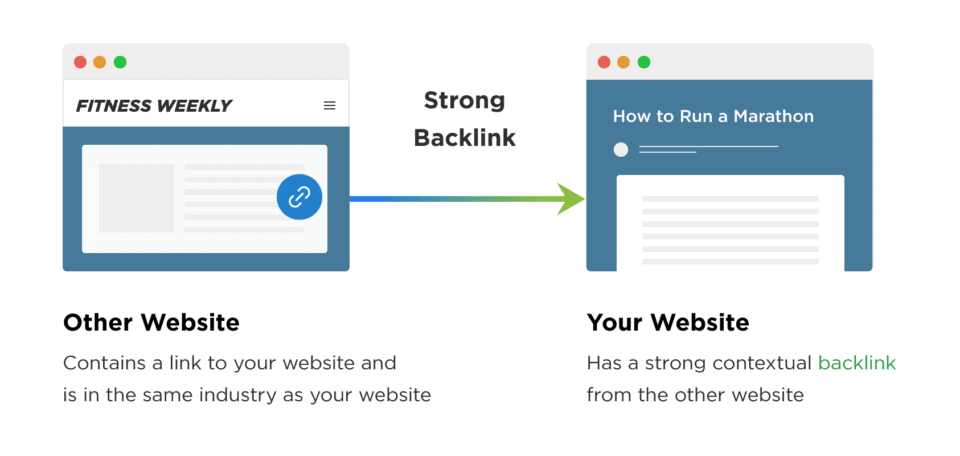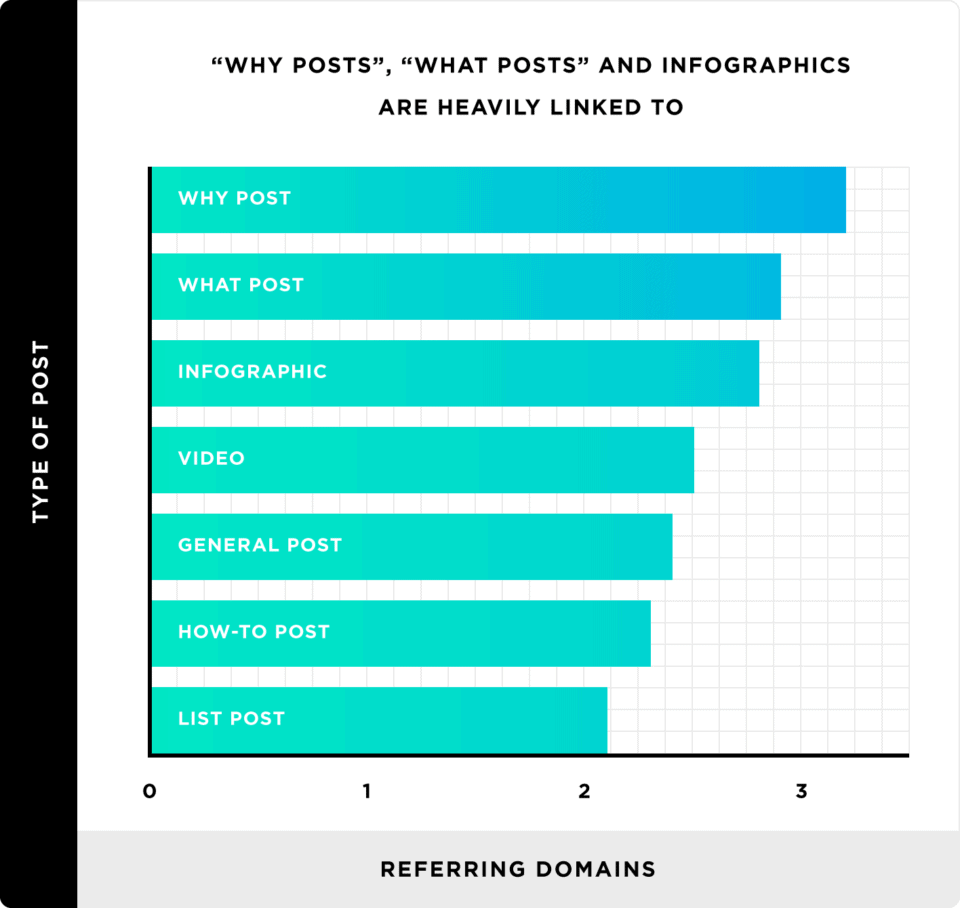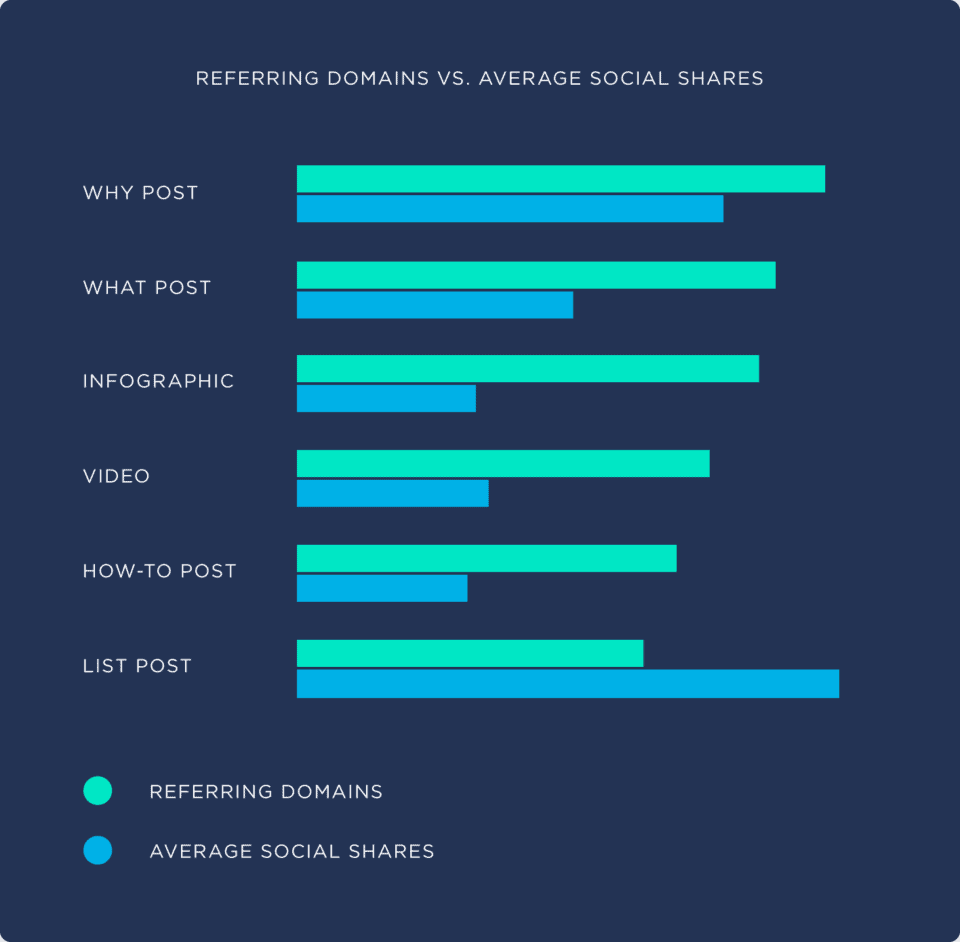In the intricate web of digital navigation, backlinks emerge as the threads that interconnect the vast expanse of websites. These fundamental elements play a pivotal role in shaping online visibility, authority, and the overall fabric of the World Wide Web. To grasp their significance, we delve into the essence of backlinks and their role in the digital landscape.
Backlinks, also referred to as inbound links or incoming links, are hyperlinks that originate from one website and direct users to another. These virtual pathways form a bridge between distinct web destinations, enabling users to seamlessly traverse from one piece of online content to another. Each backlink serves as a recommendation or endorsement from the referring website to the linked content, signifying relevance, credibility, and authority.
In the realm of search engine algorithms, backlinks hold a distinctive prominence. They function as a measure of a website’s perceived value and authority within its niche or industry. Search engines interpret backlinks as signals of trust and recognition from other online entities. Websites that garner a higher quantity of quality backlinks are often considered more authoritative and relevant, thus potentially achieving better search engine rankings.
The diversity and quality of backlinks contribute to their impact on digital visibility. A backlink from a reputable and authoritative website carries more weight than one from a less established source. Additionally, the relevance of the linked content to the referring website’s content influences the backlink’s effectiveness.
Backlinks serve multiple roles in the digital ecosystem:
- Enhanced Discoverability: Backlinks facilitate the discovery of new content by guiding users from established sources to emerging or related information.
- Search Engine Optimization (SEO): Backlinks contribute significantly to SEO efforts. Websites with high-quality backlinks often experience improved organic search rankings.
- Domain Authority: The accumulation of reputable backlinks can enhance a website’s domain authority, bolstering its credibility in the eyes of search engines and users.
- Traffic Generation: Backlinks can generate referral traffic, directing users from one website to another. This influx of visitors can result in increased engagement and conversions.
- Networking and Collaboration: Building strategic backlinks fosters collaboration and networking within industries and niches, amplifying digital partnerships.
In the dynamic realm of digital connectivity, backlinks form an intricate tapestry that weaves together the diverse corners of the internet. Their role in shaping online authority, visibility, and collaboration underscores their significance in the digital age. As the web continues to evolve, the power of backlinks persists, guiding users on a journey of exploration and knowledge acquisition.
Why Are Backlinks Important? Unveiling Their Crucial Role
In the intricate realm of digital prominence, the importance of backlinks becomes a cornerstone in shaping the online landscape. These virtual connections, akin to endorsements from one web entity to another, wield a profound impact on credibility, visibility, and search engine optimization. This exploration delves into the essential reasons why backlinks stand as a vital component in the digital hierarchy.
- Enhanced Search Engine Visibility: Backlinks serve as signals to search engines, indicating the relevance, credibility, and authority of a website. Websites with a substantial number of quality backlinks are perceived as valuable resources, often leading to improved search engine rankings.
- Establishing Authority and Credibility: Backlinks from reputable and authoritative sources act as validations of a website’s expertise. These endorsements contribute to the website’s perceived authority within its industry or niche.
- Navigational Pathways: Backlinks function as digital pathways that guide users from one content piece to another. This seamless navigation enhances user experience, enabling them to explore related or complementary information.
- Referral Traffic Generation: Quality backlinks can drive referral traffic from the referring website to the linked website. This influx of visitors can lead to increased engagement, longer dwell times, and potentially higher conversions.
- Networking and Collaboration: Building strategic backlinks fosters connections and collaborations within the digital realm. It encourages web entities to engage with and endorse each other, amplifying their collective influence.
- Domain Authority Boost: Accumulating valuable backlinks contributes to a website’s domain authority, a metric that measures overall credibility and influence. Higher domain authority can positively impact search engine rankings.
- Content Validation: Backlinks validate the quality and relevance of a website’s content. The presence of reputable backlinks serves as a testament to the value the content provides to its audience.
- Global Web Connectivity: Backlinks interconnect the vast expanse of the internet, creating a global web of references and information exchange. They transcend geographical boundaries, enabling knowledge dissemination on a worldwide scale.
- Algorithmic Signals: Search engines’ algorithms consider backlinks as a fundamental element in ranking websites. Algorithms analyze the quality, quantity, and relevance of backlinks to determine a website’s digital prominence.
- Digital Ecosystem Health: The interconnected nature of backlinks fosters a healthy digital ecosystem. Websites that provide valuable content are rewarded with backlinks, creating a symbiotic relationship within the online community.
In summary, the importance of backlinks lies in their ability to influence digital authority, visibility, and credibility. These interconnected endorsements navigate users through the virtual labyrinth, connecting them to valuable information and resources. As the digital landscape continues to evolve, backlinks remain an enduring and integral element, shaping the online narrative and cultivating a thriving digital ecosystem.
What Types of Backlinks are Valuable?
Unveiling Valuable Backlink Types: Navigating the Hierarchy of Digital Influence
Within the intricate tapestry of digital connections, certain backlink types emerge as coveted endorsements that wield a significant impact on credibility, authority, and search engine optimization. This exploration delves into the valuable types of backlinks that elevate a website’s online prominence, navigating the hierarchy of digital influence.
- Editorial Backlinks: Editorial backlinks are natural endorsements earned through high-quality content. These links are placed within the context of relevant articles, blog posts, or news stories, signifying a genuine endorsement of the linked content’s value.
- Authority and Reputable Websites: Backlinks from authoritative and reputable websites within your industry or niche carry substantial weight. These endorsements validate your expertise and elevate your website’s credibility.
- Contextual Backlinks (or anchor text): Contextual backlinks are embedded within content that is directly related to the linked website’s topic. These links provide seamless integration and enhance the reader’s experience.
They have a correlation between keyword-rich anchor text and higher rankings for that keyword.
- Guest Post Backlinks: Guest posting involves creating valuable content for other websites in exchange for a backlink to your website. When done on respected and relevant platforms, guest post backlinks can significantly boost your authority.
- Edu and Gov Backlinks: Backlinks from educational institutions (.edu) and government domains (.gov) are highly valued due to their authoritative nature. Search engines recognize these domains as reliable sources of information.
- Niche-Related Directories: Being listed in niche-related directories or industry-specific listings can provide targeted exposure and valuable backlinks, particularly if the directory is reputable.
- Influencer and Expert Mentions: When influencers or industry experts mention your website or content and provide a link, it adds credibility and draws attention from their followers.
- Link Roundups: Some websites curate link roundups, where they compile a list of valuable resources or articles. Getting your content featured in such roundups can result in quality backlinks.
- Resource Pages: Backlinks from resource pages that provide valuable information to users can enhance your website’s credibility and relevance within a specific topic.
- Broken Link Building: Identifying broken links on reputable websites and offering your content as a replacement can earn you valuable backlinks.
- Social Media Profile Links: While these are no-follow links, having your website linked from your social media profiles can indirectly contribute to your online visibility and credibility.
- Collaborative Content: Collaborating with other content creators in your niche and co-authoring valuable content can lead to shared backlinks and expanded reach.
In the ever-evolving digital landscape, the value of backlinks hinges on their relevance, credibility, and the context in which they are placed. Prioritizing these valuable backlink types in your link-building efforts contributes to a solid foundation of digital influence, elevating your website’s authority and fostering an impactful online presence.
Best Practices
Crafting Linkable Assets: Unveiling Best Practices for Digital Influence
In the dynamic landscape of digital link-building, the creation of linkable assets emerges as a strategic endeavor to foster valuable backlinks, enhance authority, and elevate online presence. This exploration delves into the best practices for crafting linkable assets that resonate with audiences and attract coveted endorsements.
- Thorough Research and Planning: Begin by conducting in-depth research to identify trending topics, gaps in existing content, and areas of interest within your niche. Formulate a content plan that aligns with your target audience’s needs and preferences.
- Valuable and Unique Content: Create content that provides genuine value and addresses specific pain points or questions. Offer insights, data, case studies, expert opinions, or original research that sets your content apart from the competition. For example, you can create content that can generate thousands of backlinks, “backlinko website” published list of 200+ Google ranking factors. this article has generated over 25,800 backlinks from 5,870 domains.
- Visual Appeal and Multimedia: Incorporate visually engaging elements such as infographics, videos, images, and interactive content. Visual aids not only enhance user experience but also make your content more shareable and link-worthy.
- Comprehensive Guides and Tutorials: Craft comprehensive guides, how-to tutorials, or step-by-step instructions that empower readers to achieve specific goals. Detailed and actionable content is more likely to attract backlinks.
- Original Research and Data: Conduct your own research or surveys to gather unique data and insights. Presenting original findings adds credibility and authority to your content, making it a valuable resource for others.
- Expert Interviews and Contributions: Include insights and quotes from industry experts or influencers. This not only adds credibility but also encourages experts to share and link to your content.
- Long-Form Content: In-depth articles and long-form content pieces provide comprehensive coverage of a topic. Such content tends to perform well in search engines and is more likely to attract backlinks.
- Interactive Tools and Widgets: Develop interactive tools, calculators, quizzes, or widgets that engage users and provide personalized experiences. Such tools can attract backlinks from websites seeking to enhance their users’ experience.
- User-Friendly Design: Ensure your content is presented in a user-friendly format with clear headings, subheadings, bullet points, and easy navigation. A well-structured design enhances readability and encourages engagement.
- Promotion and Outreach Strategy: Creating great content is only half the battle. Develop a robust promotion and outreach strategy to ensure your linkable assets reach your target audience and potential link sources.
- Social Proof and Testimonials: Incorporate social proof through user testimonials, case studies, or success stories. This adds authenticity and encourages others to link to your content.
- Regular Updates: Keep your linkable assets up to date with the latest information, trends, and insights. Outdated content can deter potential backlink sources.
- Link-Worthy Formats: Consider formats that naturally attract backlinks, such as lists, comparisons, comprehensive reviews, and detailed analyses.
- Optimize for Mobile: Ensure your content is mobile-responsive and optimized for different devices. Mobile-friendly content is more accessible and shareable.
- Measure and Adapt: Monitor the performance of your linkable assets using analytics tools. Track backlinks, referral traffic, and engagement metrics. Use this data to refine your approach and create even more effective assets.
By adhering to these best practices, you pave the way for the creation of linkable assets that resonate with your audience, garner attention from industry peers, and secure valuable backlinks. Crafting compelling, authoritative, and innovative content positions your brand at the forefront of digital influence and fosters a thriving online presence.
Strategically Building Backlinks from Link Roundups: A Tactical Guide
In the intricate realm of link-building, one valuable avenue to explore is securing backlinks from link roundups. These curated collections of valuable resources present an opportunity to gain exposure, enhance authority, and foster connections within your industry. This guide delves into the strategic approach to building backlinks from link roundups, optimizing your chances for success.
1. Identifying Relevant Link Roundups:
Before anything else, conduct thorough research to identify link roundups that align with your niche, industry, or content. Explore websites, blogs, and platforms that regularly curate such roundups. Seek those that cater to your target audience and cover topics relevant to your expertise.
2. Craft Exceptional Content:
To capture the attention of roundup curators, focus on creating exceptional content that stands out. Develop high-quality articles, guides, infographics, or other assets that provide valuable insights, data, or unique perspectives. Content that is insightful, well-researched, and engaging has a higher likelihood of being featured.
3. Stay Updated with Roundups:
Regularly monitor the link roundups you’ve identified. Subscribe to newsletters or follow influencers who curate them. This allows you to stay informed about new opportunities and tailor your content accordingly.
4. Engage with Curators:
Build relationships with the individuals curating link roundups. Engage with them on social media, share their content, and contribute meaningful insights to their discussions. Establishing a rapport increases the likelihood of your content being noticed.
5. Offer Value:
When submitting your content for consideration, focus on the value it brings to their audience. Highlight how your content addresses a specific problem, offers a fresh perspective, or adds depth to the topic at hand.
6. Personalized Outreach:
When reaching out to curators, take a personalized approach. Reference their recent roundups or specific pieces of content you found valuable. Express why you believe your content would be a valuable addition to their roundup.
7. Follow Submission Guidelines:
If the curator provides submission guidelines, adhere to them meticulously. This showcases your professionalism and respect for their process.
8. Provide a Compelling Pitch:
Craft a concise and compelling pitch that explains why your content is a perfect fit for their roundup. Highlight the unique angle, insights, or data your content brings to the table.
9. Be Patient and Persistent:
Building relationships and securing backlinks from link roundups may take time. Be patient and persistent in your efforts, and don’t be discouraged by rejections.
10. Promote Inclusion:
If your content gets featured in a roundup, promote it across your own channels. This not only amplifies the exposure but also shows appreciation for the curator’s efforts.
11. Maintain Relationships:
After your content is included in a roundup, continue to engage with the curator and express your gratitude. This can lead to further opportunities and collaborations.
Securing backlinks from link roundups requires a combination of valuable content creation, relationship-building, and strategic outreach. By following these steps, you position yourself to leverage this link-building tactic effectively, expanding your online reach, authority, and digital influence.
Leveraging The Moving Man Method: A Proactive Approach to Building Backlinks
In the realm of strategic link-building, the “Moving Man Method” emerges as a dynamic and innovative tactic to secure valuable backlinks. This method revolves around identifying outdated or broken links on reputable websites and offering your relevant content as a replacement. This guide dives into the intricacies of using The Moving Man Method to strategically acquire backlinks and bolster your digital influence.
1. Identifying Opportunities:
Begin by identifying authoritative websites within your industry or niche. These websites often have resource pages, blog posts, or articles with outdated or broken links. The goal is to discover these obsolete references that can be replaced with your valuable content.
2. Content Creation:
Craft high-quality and relevant content that can seamlessly replace the outdated links. Ensure your content offers value, insights, or solutions related to the topic. The content should be substantial enough to meet the needs of the audience and align with the context of the website.
3. Research and Outreach:
Conduct research to find the contact information of the website’s owner, webmaster, or content manager. Reach out to them via email, highlighting your discovery of the broken link on their website and offering your content as an alternative.
4. Polite and Helpful Tone:
In your outreach email, adopt a polite and helpful tone. Express your appreciation for their website and content, and provide a brief explanation of how your content can add value to their readers. Avoid sounding promotional; instead, focus on the benefits your content brings.
5. Customize Your Pitch:
Tailor each outreach email to the specific website and context. Mention why your content is a perfect fit for their audience and how it complements their existing content.
6. Follow-Up Strategy:
If you don’t receive a response initially, consider sending a follow-up email after a reasonable interval. Persistence can often lead to positive outcomes in outreach campaigns.
7. Offer Immediate Value:
In some cases, your content might be an ideal replacement for the broken link, but it might not be an exact match. If this is the case, offer to provide immediate value by suggesting modifications to your content to better fit the context.
8. Gratitude and Courtesy:
Whether your content is accepted or not, express gratitude for the opportunity to connect and offer assistance. Maintain a respectful and courteous demeanor throughout the communication.
9. Track and Measure Results:
Monitor the outcomes of your outreach efforts. Keep track of the websites that accept your replacement link and measure the impact on your backlink profile and website traffic.
10. Build Relationships:
As you successfully engage in The Moving Man Method, you have the opportunity to build relationships with website owners and curators. Maintain these connections for potential collaborations in the future.
The Moving Man Method is a proactive and mutually beneficial approach to building backlinks. By identifying and addressing broken or outdated links, you offer value to website owners while enhancing your own backlink profile. This method exemplifies the synergy of resourcefulness, relationship-building, and strategic thinking within the realm of digital influence.
Strategic Broken Link Building: Navigating the Path to Backlink Acquisition
In the realm of proactive link-building strategies, the art of broken link building stands as a dynamic approach to securing valuable backlinks. This tactic revolves around identifying broken or outdated links on reputable websites and reaching out to webmasters to suggest your relevant content as a replacement. This guide navigates through the intricacies of broken link building, unraveling its potential to enhance your backlink profile and digital influence.
1. Identifying Broken Links:
Begin by identifying authoritative websites within your niche or industry. Explore their content for broken links—links that lead to non-existent or obsolete pages. These broken links represent an opportunity to offer a solution and secure a valuable backlink.
2. Content Creation:
Craft compelling, high-quality content that aligns with the context of the broken link. The content should seamlessly replace the outdated resource and provide value to the website’s audience.
3. Outreach Strategy:
Locate the contact information of the website’s owner, content manager, or webmaster. Reach out to them via email, introducing yourself and expressing your interest in their website’s content.
4. Personalized Pitch:
In your outreach email, highlight the broken link you discovered and explain how your content serves as an ideal replacement. Emphasize the value your content brings to their readers.
5. Solution-Oriented Approach:
Position yourself as a solution provider rather than a promoter. Focus on the benefit of replacing the broken link with your content, enhancing the website’s user experience.
6. Tailored Recommendations:
If your content isn’t an exact match for the broken link, offer suggestions for modifying or adapting it to fit seamlessly into the existing content.
7. Professional Tone:
Maintain a professional and respectful tone throughout your communication. Show appreciation for the website’s content and the opportunity to contribute.
8. Follow-Up:
If you don’t receive a response initially, consider sending a follow-up email after a reasonable interval. A gentle reminder can increase the chances of engagement.
9. Track and Measure Results:
Keep track of the websites you’ve reached out to and the outcomes of your efforts. Monitor your backlink profile and website traffic to measure the impact of successful placements.
10. Relationship Building:
As you engage in broken link building, focus on building positive relationships with website owners and curators. This can lead to future collaborations and opportunities.
11. Ethical and Helpful Approach:
Ensure your broken link building efforts are ethical and genuinely helpful. The goal is to contribute value and improve the user experience for both the website’s visitors and its owner.
Broken link building marries resourcefulness with digital networking, offering a win-win scenario for both parties involved. By addressing broken links and offering relevant solutions, you not only enhance your own backlink portfolio but also contribute to the enhancement of the web’s overall user experience. This method exemplifies the synergy between value creation, relationship cultivation, and strategic link-building tactics.
Unlocking the Potential of Guest Posting: A Strategic Approach to Backlink Acquisition
In the dynamic realm of digital influence, guest posting emerges as a potent strategy for acquiring valuable backlinks and expanding your online presence. This tactic involves creating high-quality content and collaborating with authoritative websites to contribute to their platform. This guide delves into the intricacies of guest posting, unveiling its potential to elevate your authority and bolster your backlink profile.
1. Identify Target Websites:
Begin by identifying authoritative and relevant websites within your niche or industry. Look for platforms that align with your expertise and target audience. Websites with a strong online presence and engaged readership are ideal candidates.
2. Research and Familiarization:
Thoroughly research the target website’s content, tone, and style. Familiarize yourself with their audience, topics of interest, and guidelines for guest contributions.
3. Craft High-Quality Content:
Create exceptional, valuable, and original content that resonates with the target website’s readers. Your content should address a specific problem, provide insights, or offer solutions that enrich the audience’s knowledge.
4. Tailored Pitch:
Craft a personalized and compelling pitch to the website’s editorial team. Highlight your expertise, your unique angle, and how your proposed content would benefit their audience.
5. Adherence to Guidelines:
Ensure your content aligns with the website’s guidelines and preferences. This includes tone, formatting, word count, and any specific instructions provided.
6. Authoritative and Informative Content:
Your guest post should establish you as an authority in your field. Provide well-researched insights, data, examples, and practical advice to captivate the audience.
7. Seamless Integration of Backlinks:
Integrate relevant and contextual backlinks to your own content or resources within the guest post. These backlinks should enrich the reader’s experience and provide additional value.
8. Ethical Promotion:
Promote your guest post across your own channels once it’s published. This showcases your collaboration and extends the reach of your content.
9. Engage with Readers:
Engage with readers who leave comments on your guest post. Respond thoughtfully and encourage discussions to build rapport and authority.
10. Building Relationships:
Building relationships with the editorial team and other contributors can lead to more guest posting opportunities in the future.
11. Measure Impact:
Monitor the impact of your guest posts by tracking referral traffic, engagement metrics, and the overall influence on your backlink profile.
12. Consistency and Diversity:
Engage in guest posting consistently and diversify the platforms you contribute to. This enhances your authority and visibility across a broader audience.
Guest posting thrives on the synergy between valuable content creation and collaborative relationships. By offering insightful contributions to reputable platforms, you not only acquire backlinks but also establish your authority and influence within your industry. This method exemplifies the harmony between expertise, strategic networking, and the pursuit of digital prominence.
Harnessing the Power of Infographics and Visual Assets: Elevating Backlink Acquisition and Engagement
In the dynamic landscape of digital communication, infographics and visual assets emerge as potent tools for acquiring valuable backlinks and engaging audiences. These captivating visual representations of information transcend language barriers, making complex concepts accessible and shareable. This guide delves into the strategic utilization of infographics and other visual assets to enhance backlink acquisition and foster audience engagement.
1. Select Compelling Topics:
Choose topics that resonate with your target audience and align with your expertise. Identify areas where visual representation can simplify complex information or present data in a more engaging manner.
2. Data-Driven Insights:
Infographics thrive on data and insights. Collect reliable data from credible sources and transform it into visually appealing charts, graphs, and statistics.
3. Visual Storytelling:
Craft a narrative that guides the viewer through the information presented in the infographic. Effective visual storytelling enhances comprehension and encourages sharing.
4. Professional Design:
Invest in professional design that aligns with your brand’s aesthetic. A well-designed infographic enhances credibility and encourages its use as a reference.
5. Clear and Concise:
Keep the content concise while delivering the key message. Avoid overwhelming the viewer with excessive information.
6. Incorporate Branding:
Include your brand’s logo, colors, and website URL on the infographic. This subtly reinforces your brand identity when the infographic is shared.
7. Shareability and Embeddability:
Make your infographics easy to share and embed by providing an HTML code that includes a backlink to your website. This encourages other websites to use your infographic while attributing it to your brand.
8. Outreach to Relevant Websites:
Identify websites, blogs, and platforms that might find your infographic valuable. Reach out to them, introducing your infographic and suggesting it as a resource for their audience.
9. Tailored Outreach Messages:
Personalize your outreach messages based on the recipient’s content and audience. Explain how the infographic adds value to their readership.
10. Social Media Promotion:
Promote your infographic across your social media channels. Visual assets tend to perform well on platforms like Instagram, Pinterest, and Twitter.
11. Collaboration Opportunities:
Consider collaborating with influencers, bloggers, or websites within your niche. They might be interested in sharing or featuring your infographic.
12. Guest Contributions:
Offer to create custom infographics for guest contributions to other websites. This can enhance your backlink profile and expand your reach.
13. Track and Measure:
Monitor the performance of your infographics using analytics tools. Track backlinks, shares, engagement metrics, and the overall impact on your online visibility.
Infographics and visual assets exemplify the fusion of creativity and information dissemination. By creating visually appealing content that simplifies complex concepts, you not only engage audiences but also attract backlinks from websites seeking to enhance their content’s visual appeal. This approach epitomizes the harmonious blend of creativity, strategic outreach, and digital influence in the modern digital landscape.
Harnessing the Impact of Testimonials: A Strategic Approach to Backlink Acquisition
In the realm of online credibility and backlink acquisition, submitting testimonials emerges as a powerful strategy. This approach involves providing positive feedback and reviews for products, services, or platforms, often accompanied by a backlink to your own website. This guide delves into the strategic utilization of testimonials to enhance your online presence, credibility, and backlink profile.
1. Select Relevant Platforms:
Identify platforms, products, or services that align with your expertise, values, and industry. Choose those that have a strong reputation and a significant audience.
2. Genuine Feedback:
Offer authentic and honest feedback based on your personal experience with the platform, product, or service. Highlight specific features, benefits, or outcomes that you found valuable.
3. Positive Tone:
Frame your testimonial in a positive and constructive tone. Focus on the aspects that impressed you and contributed to your positive experience.
4. Specificity and Details:
Provide specific details and examples that illustrate how the platform, product, or service positively impacted your goals or challenges.
5. Include Your Backlink:
When submitting your testimonial, include a backlink to your own website or relevant content. This backlink not only provides readers with a way to learn more about you but also contributes to your backlink profile.
6. Tailored Testimonials:
Craft testimonials that are tailored to the platform or product you’re reviewing. Highlight features or benefits that resonate with the platform’s audience.
7. Outreach to Companies:
Reach out to companies, service providers, or platforms whose products or services you’ve reviewed. Share your testimonial with them and express your appreciation.
8. Networking and Collaboration:
Building relationships with the companies or platforms you’ve reviewed can lead to collaboration opportunities, such as guest blogging or content co-creation.
9. Case Studies and Success Stories:
If applicable, consider turning your positive experience into a case study or success story. These more in-depth narratives can attract attention and backlinks.
10. Promote Your Testimonials:
Promote the platforms, products, or services you’ve reviewed on your own channels. This demonstrates your engagement and enhances the visibility of your testimonials.
11. Monitor and Engage:
Keep track of where your testimonials are published. Engage with readers who interact with your testimonials through comments or shares.
12. Diverse Platforms:
Submit testimonials to a diverse range of platforms, including websites, blogs, social media, and industry-specific forums.
13. Ethical and Authentic Approach:
Ensure your testimonials are genuine and based on real experiences. Avoid creating overly promotional or fabricated content.
By strategically submitting testimonials, you position yourself as a credible and engaged participant within your industry. The inclusion of backlinks enriches your backlink profile while also contributing value to the platforms, products, or services you’ve reviewed. This approach harmonizes the concepts of authenticity, networking, and digital influence, fostering a thriving online presence.
Unlocking the Power of Blogger Reviews: A Strategic Path to Backlink Acquisition
In the realm of digital influence and online credibility, blogger reviews emerge as a dynamic strategy for acquiring valuable backlinks and expanding your online presence. This tactic involves collaborating with bloggers to provide comprehensive and authentic reviews of products, services, or platforms, often accompanied by backlinks to your own website. This guide delves into the intricacies of harnessing blogger reviews to enhance your authority, visibility, and backlink profile.
1. Identify Reputable Bloggers:
Begin by identifying reputable and influential bloggers within your industry or niche. Look for those whose content resonates with your target audience and aligns with your expertise.
2. Research and Familiarization:
Thoroughly research the selected bloggers’ content, style, and audience. Familiarize yourself with their tone, preferences, and the types of products or services they typically review.
3. Engage with Bloggers:
Engage with the bloggers by leaving thoughtful comments on their posts, sharing their content, and interacting with them on social media. Building a rapport lays the foundation for collaboration.
4. Offer Value:
Approach bloggers with a proposal to provide them with your product, service, or platform for review. Highlight how your offering adds value to their audience.
5. Authentic Reviews:
Provide the bloggers with genuine access to your offering, allowing them to experience it firsthand. Authenticity is key to building trust and credibility.
6. Comprehensive Details:
When bloggers review your offering, encourage them to provide comprehensive and detailed insights. This enhances the credibility of the review.
7. Backlink Integration:
Include backlinks to your website or relevant content within the review. These backlinks serve as valuable references for readers seeking additional information.
8. Ethical and Honest Approach:
Encourage the bloggers to maintain an honest and ethical approach to their reviews. Authenticity is valued by their readers and contributes to your credibility.
9. Promote Reviews:
Once the reviews are published, promote them across your own channels. This showcases your engagement and appreciation for the bloggers’ efforts.
10. Networking and Collaboration:
Building relationships with bloggers can lead to further collaboration opportunities, such as guest posting, joint webinars, or co-created content.
11. Monitor Engagement:
Keep track of the engagement on the reviews, including comments, shares, and discussions. Engage with readers who interact with the reviews.
12. Diverse Blogger Landscape:
Collaborate with bloggers across a diverse range of platforms, including websites, blogs, and social media, to reach a broader audience.
13. Long-Term Relationships:
Nurture the relationships you build with bloggers for potential ongoing collaboration and mutual support.
By strategically leveraging blogger reviews, you position yourself as a credible and trusted figure within your industry. The inclusion of backlinks enriches your backlink profile while also providing valuable references for readers seeking information about your offering. This approach exemplifies the fusion of authenticity, networking, and digital influence in the contemporary digital landscape.
Unlocking the Power of Link Reclamation: A Strategic Approach to Strengthening Backlink Profiles
In the realm of digital presence and backlink acquisition, the strategy of link reclamation emerges as a dynamic method for fortifying and optimizing backlink profiles. This approach involves identifying and reclaiming lost, broken, or unattributed backlinks pointing to your website. This guide delves into the intricacies of harnessing link reclamation to enhance your online authority, bolster your backlink portfolio, and optimize your digital influence.
1. Conduct Thorough Backlink Analysis:
Begin by conducting a comprehensive analysis of your existing backlinks. Utilize tools to identify broken or lost links, as well as instances where your content is mentioned without a backlink.
2. Prioritize Quality and Relevance:
Focus on reclaiming backlinks from high-quality and relevant sources. These backlinks have the potential to significantly impact your credibility and search engine rankings.
3. Identify Link Opportunities:
Identify websites or platforms that have mentioned your content but failed to include a backlink. Reach out to them, expressing your appreciation for the mention and kindly requesting a backlink to your content.
4. Outreach and Communication:
Craft polite and concise outreach emails to the website owners or content managers. Explain the context of the mention, provide the correct URL, and request a proper backlink.
5. Broken Link Recovery:
For broken or dead links, reach out to the website owners and inform them about the issue. Offer your content as a suitable replacement and provide the correct URL.
6. Tailored Outreach:
Personalize each outreach message to the specific website and context. Mention the value your content brings and the benefits of reinstating the backlink.
7. Utilize Social Media:
Engage with website owners or platforms on social media platforms. Express your interest in reestablishing the link and offer to provide any necessary information.
8. Gratitude and Professionalism:
Whether your request is successful or not, maintain a professional and appreciative tone throughout your communication.
9. Monitor Progress:
Keep track of your outreach efforts and the responses you receive. Document the progress of link reclamation and its impact on your backlink profile.
10. Consistent Review:
Regularly review your backlinks to identify new instances of lost or unattributed mentions. Continuously engage in link reclamation efforts to optimize your profile.
11. Collaboration and Networking:
Building relationships with website owners can lead to more collaboration opportunities and mutual support in the future.
12. Ethical Approach:
Ensure your link reclamation efforts are ethical and respectful. Avoid aggressive or spammy tactics that can harm your reputation.
By strategically leveraging link reclamation, you not only strengthen your backlink profile but also demonstrate your commitment to providing accurate and valuable content. This method exemplifies the balance between proactive engagement, optimization, and digital influence in the modern digital landscape.
Harnessing the Power of HARO: A Strategic Approach to Backlink Acquisition
In the dynamic realm of backlink acquisition, the Help a Reporter Out (HARO) platform emerges as a powerful tool for connecting with journalists, bloggers, and media outlets seeking expert insights. This approach involves responding to relevant queries on HARO and providing valuable input, often resulting in backlinks to your website. This guide delves into the intricacies of using HARO to enhance your online presence, authority, and backlink profile.
1. Register and Familiarize:
Begin by registering on the HARO platform and familiarizing yourself with its interface. Understand the types of queries and topics journalists are seeking input on.
2. Identify Relevant Queries:
Regularly browse through the queries posted by journalists that align with your expertise and industry. Focus on queries where you can provide valuable insights.
3. Craft Thoughtful Responses:
Craft responses that address the query’s requirements in a thoughtful and comprehensive manner. Provide insights, examples, data, and practical advice.
4. Highlight Your Expertise:
In your response, highlight your expertise and experience relevant to the query. Establishing your credibility increases the chances of being selected.
5. Concise and Engaging:
Keep your responses concise and engaging, providing information that directly addresses the journalist’s needs.
6. Timely Submissions:
Submit your responses promptly after the query is posted. Journalists often have tight deadlines, and timely responses are appreciated.
7. Include Relevant Details:
Include your name, title, affiliation, and a brief bio in your response. This information helps journalists verify your expertise.
8. Provide Contact Information:
Ensure you provide accurate contact information in case the journalist needs to reach out for further clarification.
9. Professional Tone:
Maintain a professional and respectful tone in your responses. Journalists appreciate concise and courteous communication.
10. Follow Journalist Guidelines:
Adhere to any specific guidelines provided by the journalist, including word count, formatting, and any additional information they request.
11. Monitor Responses:
Regularly monitor your email for responses from journalists. Promptly reply to any follow-up questions they may have.
12. Thank Journalists:
Whether your input gets selected or not, express gratitude to the journalists for considering your response.
13. Promote Coverage:
If your input gets featured in an article, promote it across your own channels. This showcases your authority and engagement.
14. Consistent Participation:
Engage in HARO consistently to increase your chances of being featured and building relationships with journalists.
15. Ethical Engagement:
Engage on HARO ethically, providing genuine and valuable insights that contribute to quality journalism.
By strategically leveraging HARO, you position yourself as an authoritative voice within your industry. The inclusion of backlinks in articles where your insights are featured enriches your backlink profile and amplifies your online presence. This approach showcases the symbiosis of expertise, proactive engagement, and digital influence in the modern digital landscape.
Strategic Approach: Reverse Engineering Competitor Backlinks for Enhanced Backlink Acquisition
In the realm of strategic backlink acquisition, the technique of reverse engineering competitor backlinks emerges as a potent method for uncovering valuable linking opportunities. This approach involves analyzing the backlink profiles of your competitors to identify authoritative and relevant sources, which you can then target for your own backlink strategy. This guide delves into the intricacies of using this technique to bolster your backlink profile and enhance your digital influence.
1. Identify Competitors:
Begin by identifying your key competitors within your industry or niche. Select those whose online authority and visibility align closely with your goals.
2. Utilize Backlink Analysis Tools:
Leverage backlink analysis tools to examine the backlink profiles of your selected competitors. These tools provide insights into the websites linking to them.
3. Quality Over Quantity:
Focus on quality over quantity. Identify authoritative and reputable websites that are linking to your competitors.
4. Analyze Linking Context:
Analyze the context in which your competitors’ backlinks are placed. Understand how they’re incorporating relevant keywords and content themes.
5. Identify Common Sources:
Identify common sources that link to multiple competitors. These sources often have a vested interest in your industry and could be valuable linking opportunities for you as well.
6. Analyze Content Themes:
Analyze the types of content that attract backlinks to your competitors. This insight can guide your content creation strategy.
7. Outreach Strategy:
Once you’ve identified potential linking sources, develop a strategic outreach strategy. Reach out to these sources with personalized pitches.
8. Offer Unique Value:
When reaching out to potential linking sources, highlight the unique value you bring. Explain how your content can enhance their audience’s experience.
9. Customized Outreach:
Tailor each outreach message to the specific website and context. Mention your appreciation for their content and why your collaboration makes sense.
10. Ethical Engagement:
Ensure your outreach efforts are ethical and focused on mutual benefit. Avoid spammy tactics that can harm your reputation.
11. Monitor and Measure:
Monitor the outcomes of your outreach efforts. Keep track of websites that link to your content and measure the impact on your backlink profile.
12. Networking and Collaboration:
Building relationships with websites that link to your competitors can lead to future collaboration opportunities.
13. Consistency is Key:
Engage in consistent backlink analysis and reverse engineering to stay updated on the changing landscape.
By strategically reverse engineering your competitors’ backlinks, you gain valuable insights into authoritative sources within your industry. Targeting these sources for your own backlink strategy allows you to tap into existing networks and enhance your digital influence. This approach exemplifies the blend of research, strategy, and proactive engagement that drives successful backlink acquisition in the modern digital ecosystem.
Strategic Approach: Embrace Link-Worthy Content Formats for Optimal Backlink Generation
In the dynamic landscape of backlink acquisition, the strategy of focusing on content formats that naturally attract links stands as a potent method for fostering organic link-building. This approach involves creating content in formats that inherently resonate with audiences and compel them to share and link to it. This guide delves into the intricacies of using link-worthy content formats to enhance your backlink profile and amplify your online influence.
1. Analyze Successful Formats:
Begin by analyzing content formats that have historically generated a significant number of backlinks. Research your industry and identify trends in link-worthy content.
2. Infographics and Visual Assets:
Infographics and visual assets simplify complex information and are highly shareable. Craft visually appealing graphics that present data, insights, or guides.
3. Comprehensive Guides:
Comprehensive guides that provide in-depth insights, step-by-step instructions, or comprehensive resources tend to attract backlinks from those seeking authoritative information.
4. Original Research and Studies:
Conduct original research or studies within your industry. Present your findings in well-structured reports that offer unique insights.
5. Interactive Content:
Interactive content such as quizzes, calculators, and interactive infographics engage audiences and encourage them to share and link to the content.
6. Listicles and Roundup Posts:
Listicles and roundup posts that curate valuable resources, tools, or insights from various sources appeal to audiences seeking curated content.
7. Case Studies and Success Stories:
Case studies and success stories that highlight real-life examples of challenges and solutions resonate with audiences and showcase your expertise.
8. Expert Interviews:
Conduct interviews with industry experts and thought leaders. These interviews can provide valuable insights and attract backlinks from their followers.
9. Unique Visual Content:
Create original visual content such as memes, GIFs, or custom illustrations that resonate with your audience’s sense of humor or interests.
10. Interactive Maps and Data Visualizations:
Interactive maps or data visualizations that provide location-based insights or data-driven information can capture audience attention.
11. Viral and Trending Content:
Stay updated on viral trends and create content that aligns with them. Viral content is more likely to be shared and linked to.
12. Promote Shareability:
Craft content with a focus on shareability. Include social sharing buttons, clear calls to action, and elements that encourage sharing.
13. Ethical and Valuable Approach:
Ensure your content offers genuine value and is aligned with ethical content creation practices. Avoid sensationalism or clickbait tactics.
By strategically embracing content formats that naturally generate links, you position yourself to create content that resonates with audiences and compels them to engage and share. This approach exemplifies the synergy between content creation, audience engagement, and backlink acquisition in the modern digital landscape.
Learn More

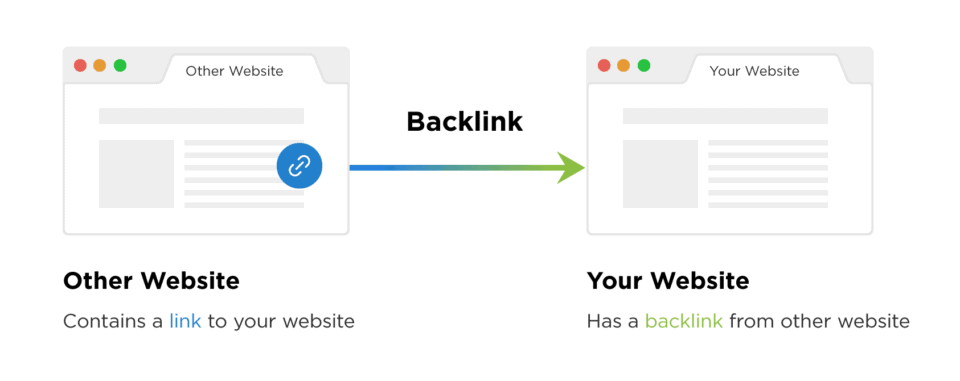
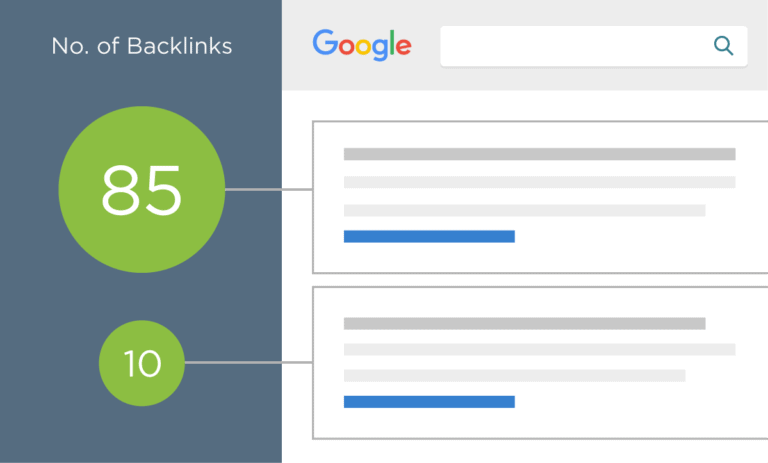
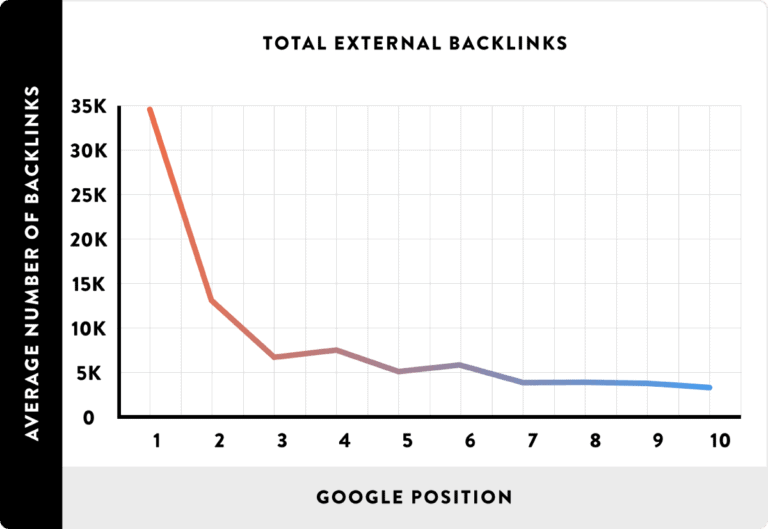
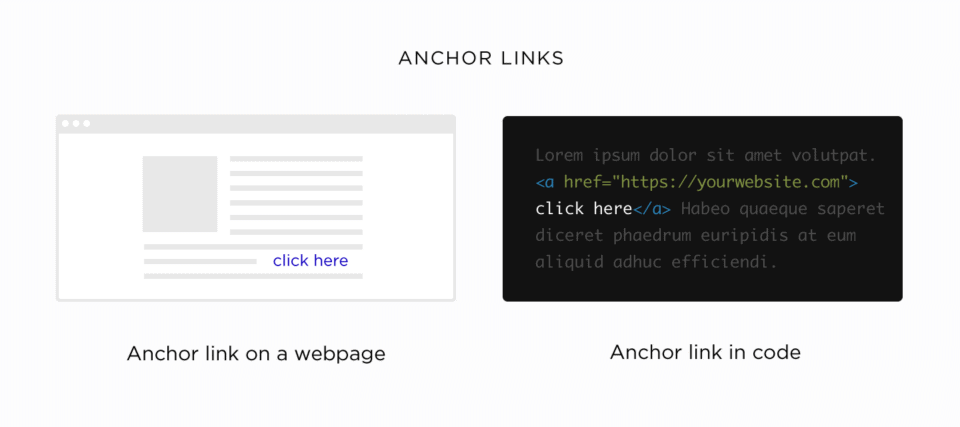 They have a correlation between keyword-rich anchor text and higher rankings for that keyword.
They have a correlation between keyword-rich anchor text and higher rankings for that keyword. 